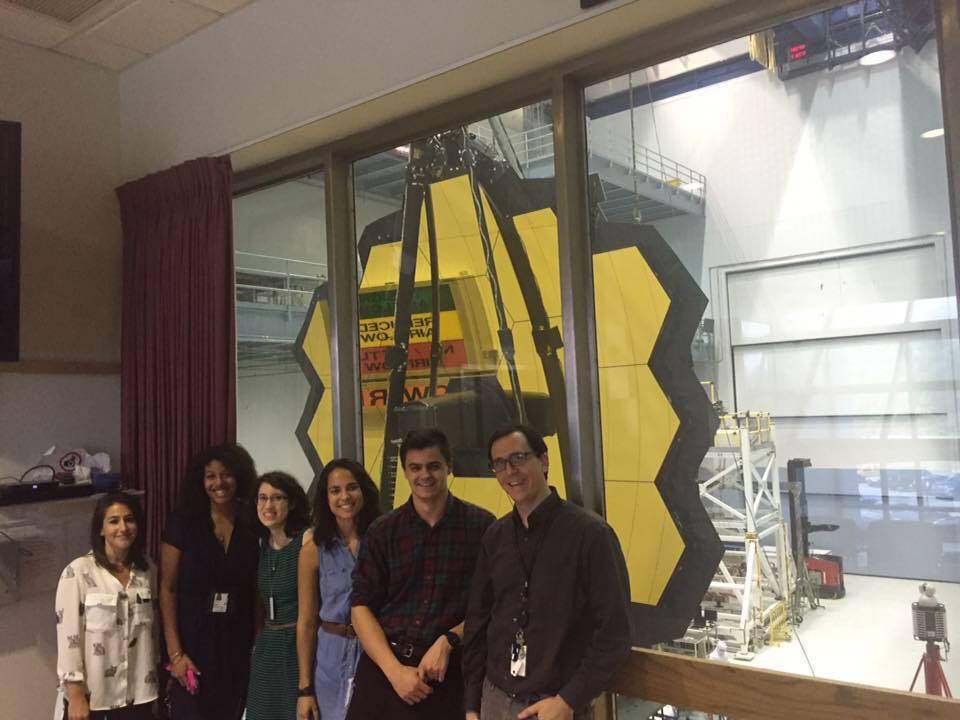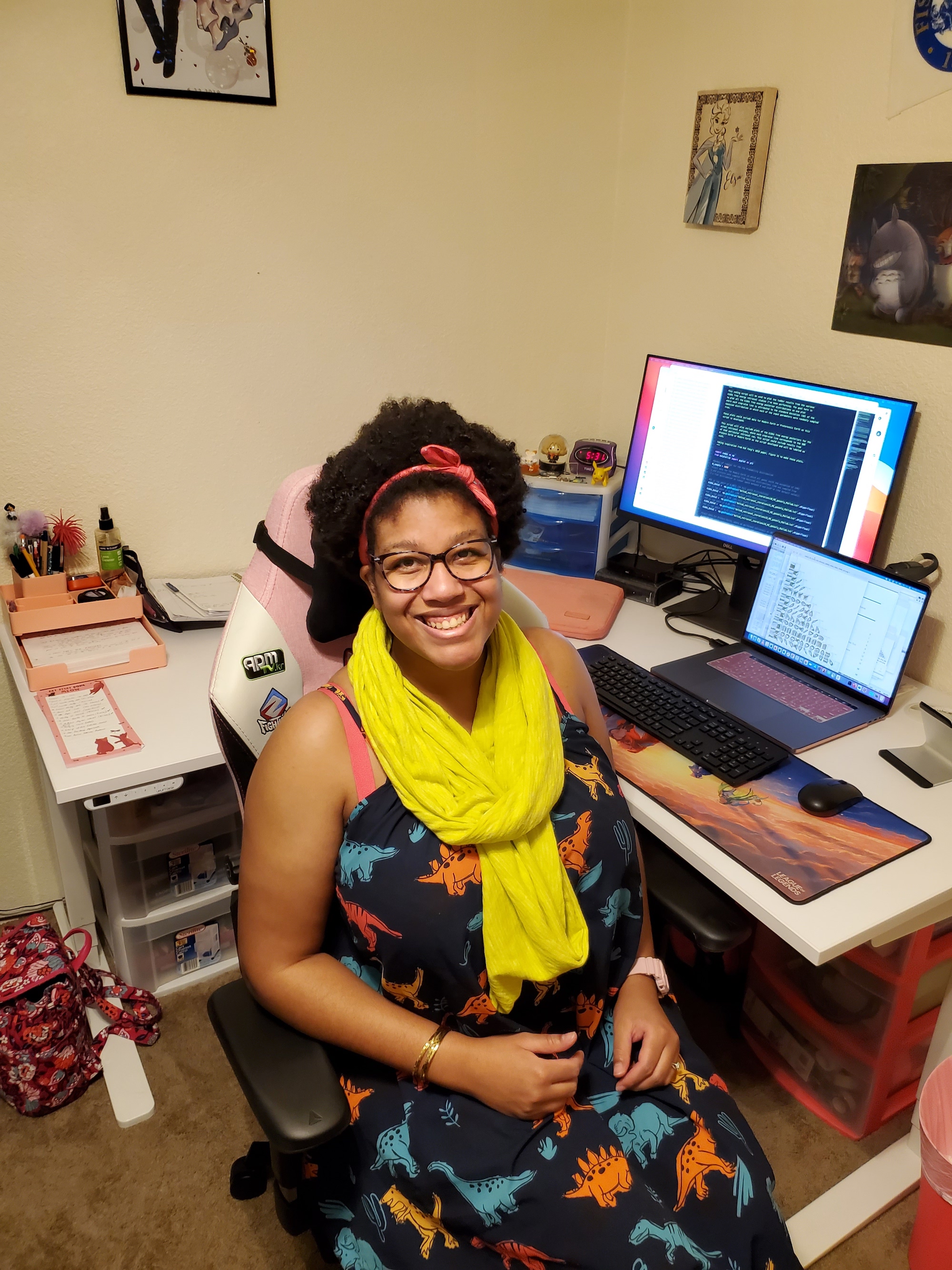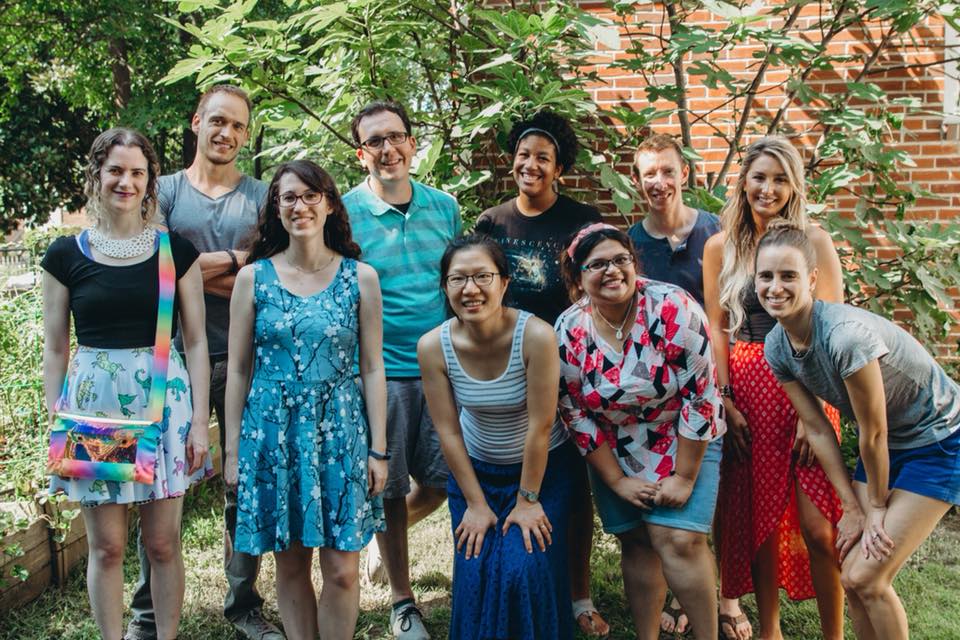“Are we alone?” asked Amber Young, a third-year graduate student in the Department of Astronomy and Planetary Sciences at NAU.
“I’m heavily engaged in the search for life elsewhere. The age-old question of ‘are we alone?’ is a compelling one, and I’ve made a commitment to contribute as much as I can to answering it.”
Young is the recipient of a prestigious training grant from NASA to help her do just that. The grant helps fund research opportunities for students who attend a minority serving institution (MSI) and are doing STEM research that contributes to NASA’s overarching goal of space exploration. It will provide Young with three years of funding for her proposed research project and opportunities to work at Goddard Space Flight Center.
This specific NASA training grant has an intensive application process that includes a full-fledged project proposal with a six-page project description, a personal statement, a project timeline and an impact statement that illustrates how the proposed project will not only impact the researcher, but also NASA and the overall field.
She also submitted two letters of recommendation and a letter of support from her NASA technical adviser, so she had to make sure NASA collaborators were on board with the scope of the project before applying. Young and her NAU adviser, Tyler Robinson, assistant professor in the Department of Astronomy and Planetary Sciences, worked together to create the project proposal and submit it to NASA for review. This grant is open to students at all MSI institutions throughout the nation, and only a select few are chosen out of thousands of applications. This was Young’s first and last opportunity to receive this grant as this was NAU’s first year garnering MSI status and students no longer qualify if they are too far along in their graduate studies.
“I’m working remotely full-time right now, so I was at home when I got the email. I saw the subject line was very vague and immediately thought to myself, ‘darn, we didn’t get it,’ but as I’m reading the decision letter, I’m scanning it for ‘we’re sorry to inform…’ or something along those lines and didn’t find it,” Young said. “I had to promptly re-read it, and keep myself from falling over with excitement, because that’s the moment I realized I did it, I got the award.”
Young, who has worked at Goddard Space Flight Center before, will now return to perform new research to determine if there is life outside of our solar system. Young studies exoplanets, which are light-years away, for biosignatures that would show signs of life.
“Studying these atmospheric components is important because we can look for chemical species that are essential for life (e.g. water) or are produced by life (e.g. O2). But another critical part of this work is understanding the underlying physical processes that produce these chemical species, because it allows us to distinguish false-positive cases (where the molecule(s) is actually being produced by a non-biologic process) from actual life detections,” Young said.
She will work with NASA team members on the LUVOIR Mission to build computer modeling tools that will allow Young to examine which observational scenarios are ideal for detecting and interpreting biosignatures.
“NAU has helped me gain invaluable experience and knowledge through the Astronomy and Planetary Sciences Program. The coursework is diverse and allows me to foster the interdisciplinary nature of my research,” Young said. “NAU has opened doors to various opportunities for me, whether it be improving my writing skills, improving my Python coding, or facilitating my passion for mentoring underrepresented students like myself through the Louis Stokes Alliance for Minority Participation Program. All of these opportunities have helped me grow and I’m so thankful for the faculty, colleagues, and students I’ve been able to work and connect with during my time here at NAU.”
Carsen Jones | NAU Communications






